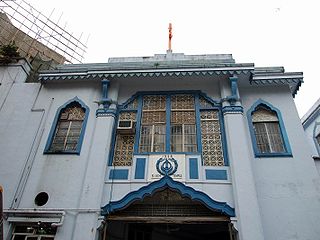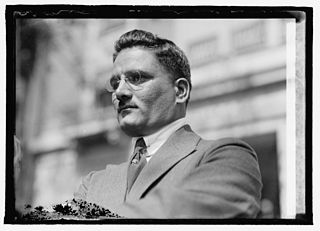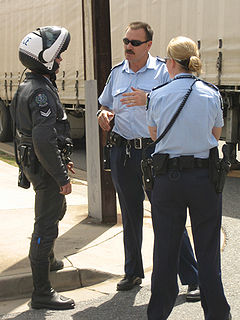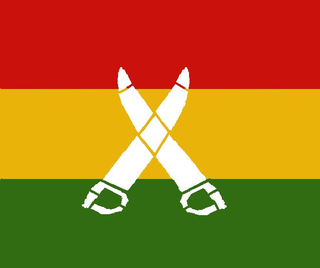
Khalsa Diwan Sikh Temple is a Gurdwara in the Wan Chai District of Hong Kong, on the junction of Queen's Road East and Stubbs Road, Hong Kong Island.

The Majha region is recognized as the region that is located at the center of the historical Punjab region, that is northward from the right banks of river Beas, and extends up to river Jhelum at its northmost. People of the Majha region are given the demonym "Mājhi". The Majhi dialect of Punjabi language is the main language of this region, which is also the standard dialect and register of the Punjabi language. The most populous city in the area is Lahore on the Pakistani side of the border.

Baba Gurdit Singh was the central figure in the Komagata Maru incident of 1914, one of several incidents in the history of early 20th century involving exclusion laws in both Canada and the United States designed to keep out immigrants of only Asian origin.

Canadian Sikhs number roughly 468,670 people (2011) and account for roughly 1.4% of Canada's population. Canadian Sikhs are often credited for paving the path to Canada for all South Asian immigrants as well as for inadvertently creating the presence of Sikhism in the United States. Sikhism is a world religion with over 35 million followers worldwide, with majority of their population in Punjab, India. The Legislative Assembly of Ontario celebrates April as Sikh Heritage Month.
The Hindu–German Conspiracy(Note on the name) was a series of plans between 1914 and 1917 by Indian nationalist groups to attempt Pan-Indian rebellion against the British Raj during World War I, formulated between the Indian revolutionary underground and exiled or self-exiled nationalists who formed, in the United States, the Ghadar Party, and in Germany, the Indian independence committee, in the decade preceding the Great War. The conspiracy was drawn up at the beginning of the war, with extensive support from the German Foreign Office, the German consulate in San Francisco, as well as some support from Ottoman Turkey and the Irish republican movement. The most prominent plan attempted to foment unrest and trigger a Pan-Indian mutiny in the British Indian Army from Punjab to Singapore. This plot was planned to be executed in February 1915 with the aim of overthrowing British rule over the Indian subcontinent. The February mutiny was ultimately thwarted when British intelligence infiltrated the Ghadarite movement and arrested key figures. Mutinies in smaller units and garrisons within India were also crushed.
The Ghadar Mutiny (: ग़दर राज्य-क्रान्ति, غدر ریاست - کرانتی Ġadara Rājya-krānti), also known as the Ghadar Conspiracy, was a plan to initiate a pan-Indian mutiny in the British Indian Army in February 1915 to end the British Raj in India. The plot originated at the onset of World War I, between the Ghadar Party in the United States, the Berlin Committee in Germany, the Indian revolutionary underground in British India and the German Foreign Office through the consulate in San Francisco. The incident derives its name from the North American Ghadar Party, whose members of the Punjabi Sikh community in Canada and United States were among the most prominent participants in the plan. It was the most prominent amongst a number of plans of the much larger Hindu–German Mutiny, formulated between 1914 and 1917 to initiate a Pan-Indian rebellion against the British Raj during World War I. The mutiny was planned to start in the key state of Punjab, followed by mutinies in Bengal and rest of India. Indian units as far as Singapore were planned to participate in the rebellion. The plans were thwarted through a coordinated intelligence and police response. British intelligence infiltrated the Ghadarite movement in Canada and in India, and last minute intelligence from a spy helping to crush the planned uprising in Punjab before it started. Key figures were arrested, mutinies in smaller units and garrisons within India were also crushed.
Baba Sohan Singh Bhakna(1870–1968) was an Indian revolutionary, the founding president of the Ghadar Party, and a leading member of the party involved in the Ghadar Conspiracy of 1915. Tried at the Lahore Conspiracy trial, Sohan Singh served sixteen years of a life sentence for his part in the conspiracy before he was released in 1930. He later worked closely with the Indian labour movement, devoting considerable time to the Kisan Sabha and the Communist Party of India.
Kirpal Singh was a soldier of the British Indian Army who is best known for his role in passing on to the Punjab CID the intelligence on the date of the Ghadar Conspiracy in February 1915 during World War I.

Bhai Bhagwan Singh Gyanee was an Indian Nationalist and a leading luminary of the Ghadar Party. Elected the party president in 1914, he was extensively involved in the Ghadar Conspiracy of 1915 during World War I and in the aftermath of its failure fled to Japan. He is also known for his nationalist poems that were published in the Hindustan Ghadar and later in the compilation Ghadar di Gunj.
British counter-intelligence against the Indian revolutionary movement during World War I began from its initial roots in the late-19th century and ultimately came to span in extent from Asia through Europe to the West Coast of the United States and Canada. It was effective in thwarting a number of attempts for insurrection in British India during World War I and ultimately in controlling the Indian revolutionary movement both at home and abroad.

Komagata Maru was a steamship owned by the Shinyei Kisen Goshi Kaisya of Japan. She was built as a cargo ship in 1890 and had previously been known as both SS Stubbenhuk and SS Sicilia while sailing for two different German owners. She was later renamed Heian Maru.
Events in the year 1914 in India.
The Canadian government's first attempt to restrict immigration was to pass an order-in-council on January 8, 1908, that prohibited immigration of persons who "in the opinion of the Minister of the Interior" did not "come from the country of their birth or citizenship by a continuous journey and or through tickets purchased before leaving their country of their birth or nationality." In practice this applied only to ships that began their voyage in India, as the great distance usually necessitated a stopover in Japan or Hawaii. These regulations came at a time when Canada was accepting massive numbers of immigrants, almost all of whom came from Europe.
Joseph Edward Bird was a Canadian legal figure. Bird was the primary lawyer, hired by the Khalsa Diwan Society to represent the passengers on board the Komagata Maru in Vancouver, 1914. Bird fought actively against the threat of his clients' eventual deportation, and he made great effort to challenge Canada's highly restrictive immigration laws. Bird was an advocate for equality, and sought to reform the race-based exclusion laws in Canada. Bird attempted to prove that the passengers of the Komagata Maru should have been able to settle in Canada as British subjects, though he was ultimately unsuccessful; public and political sentiments and policies at the time were overtly racist, and the BC Court of Appeal ordered the Komagata Maru to return to India.
The Ingress into India Ordinance, 1914 was a law passed in British India in September 1914, at the outset of World War I, which allowed the Government of India to screen, detain, and restrict the movement of people returning to India.
Punjabi Canadians are Canadian citizens whose heritage originates wholly or partly in the Punjab, a region in northern South Asia, which encompasses India and Pakistan. There are large Punjabi communities in British Columbia, concentrated in Metro Vancouver, and Ontario, particularly in the Greater Toronto Area.
Continuous Journey is a 2004 documentary film directed by Indian-Canadian film-maker Ali Kazimi. The film chronicles the events that took place during the 1914 voyage of the Komagata Maru.












